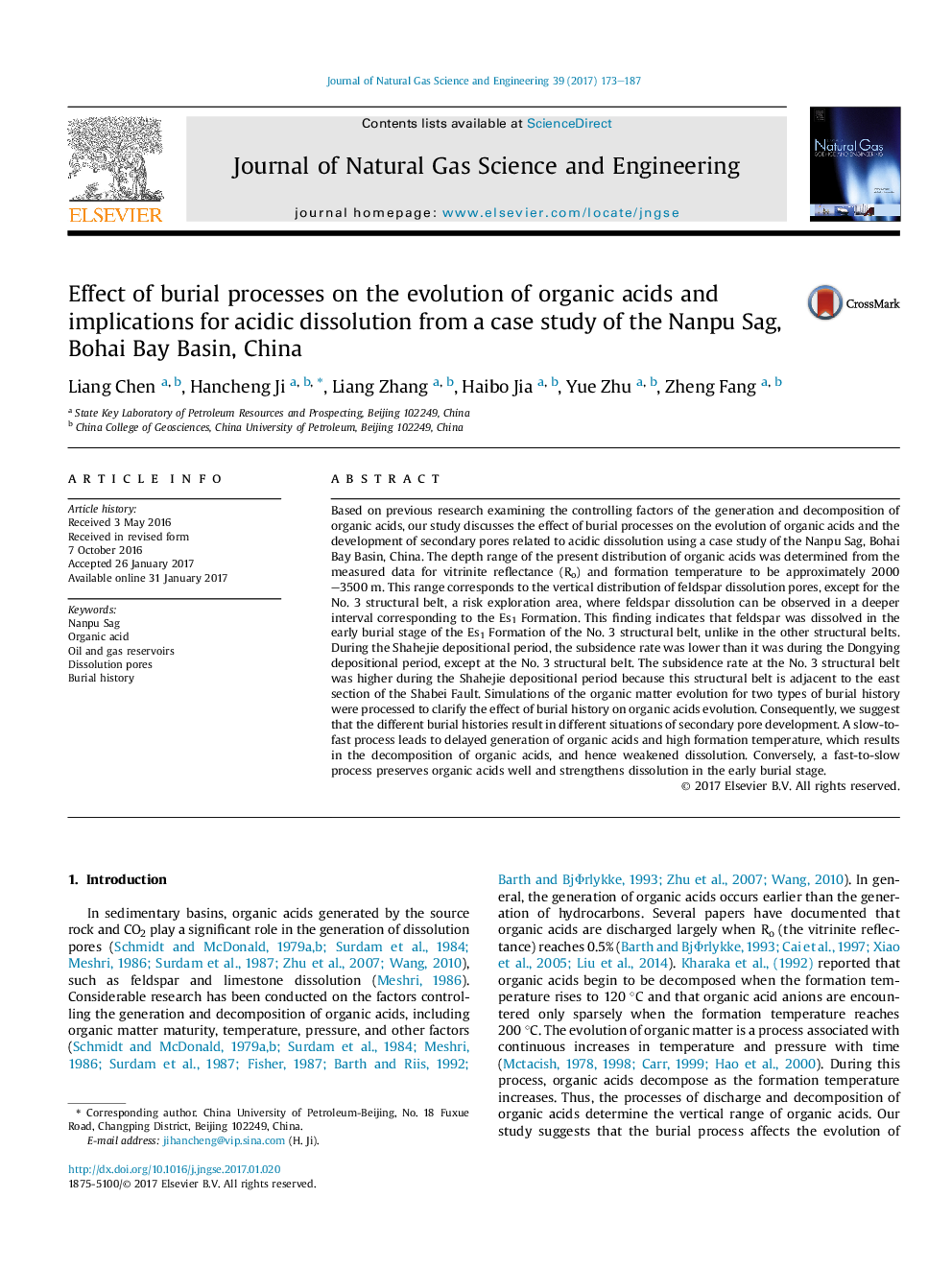| کد مقاله | کد نشریه | سال انتشار | مقاله انگلیسی | نسخه تمام متن |
|---|---|---|---|---|
| 5485146 | 1523004 | 2017 | 15 صفحه PDF | دانلود رایگان |
عنوان انگلیسی مقاله ISI
Effect of burial processes on the evolution of organic acids and implications for acidic dissolution from a case study of the Nanpu Sag, Bohai Bay Basin, China
دانلود مقاله + سفارش ترجمه
دانلود مقاله ISI انگلیسی
رایگان برای ایرانیان
کلمات کلیدی
موضوعات مرتبط
مهندسی و علوم پایه
علوم زمین و سیارات
علوم زمین و سیاره ای (عمومی)
پیش نمایش صفحه اول مقاله

چکیده انگلیسی
Based on previous research examining the controlling factors of the generation and decomposition of organic acids, our study discusses the effect of burial processes on the evolution of organic acids and the development of secondary pores related to acidic dissolution using a case study of the Nanpu Sag, Bohai Bay Basin, China. The depth range of the present distribution of organic acids was determined from the measured data for vitrinite reflectance (Ro) and formation temperature to be approximately 2000-3500Â m. This range corresponds to the vertical distribution of feldspar dissolution pores, except for the No. 3 structural belt, a risk exploration area, where feldspar dissolution can be observed in a deeper interval corresponding to the Es1 Formation. This finding indicates that feldspar was dissolved in the early burial stage of the Es1 Formation of the No. 3 structural belt, unlike in the other structural belts. During the Shahejie depositional period, the subsidence rate was lower than it was during the Dongying depositional period, except at the No. 3 structural belt. The subsidence rate at the No. 3 structural belt was higher during the Shahejie depositional period because this structural belt is adjacent to the east section of the Shabei Fault. Simulations of the organic matter evolution for two types of burial history were processed to clarify the effect of burial history on organic acids evolution. Consequently, we suggest that the different burial histories result in different situations of secondary pore development. A slow-to-fast process leads to delayed generation of organic acids and high formation temperature, which results in the decomposition of organic acids, and hence weakened dissolution. Conversely, a fast-to-slow process preserves organic acids well and strengthens dissolution in the early burial stage.
ناشر
Database: Elsevier - ScienceDirect (ساینس دایرکت)
Journal: Journal of Natural Gas Science and Engineering - Volume 39, March 2017, Pages 173-187
Journal: Journal of Natural Gas Science and Engineering - Volume 39, March 2017, Pages 173-187
نویسندگان
Liang Chen, Hancheng Ji, Liang Zhang, Haibo Jia, Yue Zhu, Zheng Fang,